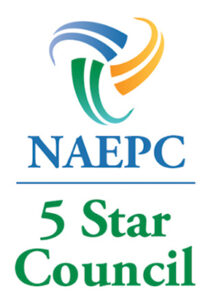Estate Planning Council of Cleveland helps families achieve long-term success by promoting cross-disciplinary collaboration
The Estate Planning Council of Cleveland is pleased to once again partner with Smart Business to present our second annual estate planning issue.
This publication is intended to provide the business community with timely and valuable information reflecting our Council’s collaborative approach to business and wealth planning, which helps foster more integrated and nuanced discussions among professional advisers. The articles in this issue are authored by Council members from a variety of disciplines, including accountants, insurance advisers, investment advisers, lawyers and planned giving professionals. Our Council members work together across disciplines to provide clients with well-rounded guidance.

In these articles, we have addressed a wide range of topics related to effective wealth transfer through estate, gift and charitable planning. In addition to providing primers on individual topics, our intention in compiling this issue is to convey the breadth and depth of our field, and of the vital need for effective collaboration among professional advisers across disciplines. Succession planning focuses on effective transition of both business and personal wealth, this creates conversations about business, retirement, charitable giving and estate planning. These are just a few connections the Estate Planning Council’s professionals are equipped to help you make.
Our member directory includes certified public accountants, financial planners, insurance advisers, investment managers, lawyers and planned giving professionals, all of whom can support you in this process. Our experienced members look forward to helping you navigate your business, personal financial and estate planning goals in our ever-changing tax, economic, legislative and geopolitical environment.
A proud member of the Cleveland community, the Estate Planning Council of Cleveland has a long history of supporting the Ronald McDonald House Charities of Northeast Ohio. For 13 years, the Estate Planning Council of Cleveland has supported our local Ronald McDonald House, providing a welcoming place for families to stay while caring for their sick children.
Founded in the 1930s, the Estate Planning Council of Cleveland is a highly regarded association composed of more than 400 professionals in the Greater Cleveland area, including accountants, bankers, financial planners, insurance agents, lawyers, planned giving officers, trust officers and appraisers. Our members are a diverse group caring for clients concerned about each generation, business, family, tax and emotion. The National Association of Estate Planners & Councils recognized Cleveland as a Council of Excellence for six years in a row beginning in 2016, and as a 5-star council each year for the last two years.
A directory of members can be accessed via the QR code on the corresponding page and on our website (www.epccleveland.org). These professionals can assist with your unique situation. We hope you find this to be a useful resource as you work with your advisers to plan a sound future for yourself and your loved ones.
Katherine E. Wensink co-chairs the estate planning and probate group at McDonald Hopkins. Contact her at [email protected] or 216.348.5729. ◆

Awards
ESTATE PLANNING COUNCIL OF CLEVELAND DISTINGUISHED ESTATE PLANNER 2024

Wellspring Financial Advisors, LLC
ESTATE PLANNING COUNCIL OF CLEVELAND EXCEPTIONAL SERVICE AWARD RECIPIENT 2024

Tucker Ellis LLP
Entity Succession Planning
KIKO Realtors, Auctioneers & Advisors | Succession planning for a family business

Many family businesses have been built from the ground up, often starting with the spark of an idea and a lifetime watching it grow. Owners of these companies love their businesses — and rightfully so.
But that emotional attachment can make it hard to think about an important step in business leadership: Succession planning.
In fact, according to a Wilmington Trust study of 200 privately held businesses, 58 percent of small business owners have no succession plan. However, it is never too early to start thinking about succession planning. Most of the business owners we work with start thinking about succession planning two years before they actually want to retire.
Here are important tips to help you plan the next phase of your business.
Have the right people
in the room
Building a thriving family business — and a successful transition plan — is all about getting the right people in the right seats. And the right people aren’t always family.
First, assemble an advisory team. These advisers should trust and care about your family, challenge your way of thinking, have experience in business leadership and succession planning, and understand tax and law. They could be accountants, attorneys, mentors, wealth managers, family and friends.
Second, learn how to evaluate your current management team to see if anyone is the right fit to transition the business into the future. People are driven by their capabilities — can they do the work; passion — do they want to do the work; energy — is their energy level strong enough to do the work; and skill — are they willing to learn new skills and able to rely on others who have the skills.
Your future leader must have these skills. Don’t assume your son or daughter, even if they’re active in the business, is right for the CEO role.
What about selling?
Sometimes when the succession planning process ends, the decision is made to sell the business. What then? In that instance, you need to add another expert to your advisory team: an auctioneer/broker.
There are two selling options to consider:
1. Sell the business as an ongoing concern, in which case you’ll need an attorney, an accountant and a business broker; or
2. Liquidate the business’s real estate and assets, in which case you’ll need a real estate and auction brokerage firm that specializes in converting assets to cash.
We recognize succession planning can be difficult, but it’s a crucial step for the continued success of a family-owned business.
Dick Kiko Jr., CEO, Broker, Auctioneer at KIKO Realtors, Auctioneers & Advisors. Contact: 330.453.9187 or [email protected] ◆
Stout Risius Ross, LLC / The impact on business valuations from Cecil vs. Commissioner
The U.S. Tax Court waited seven years after trial to issue its opinion in Cecil vs. Commissioner (Cecil), resulting in great anticipation for a definitive view regarding the valuation of S corporations and the impact of tax affecting. This case involved the transfer of voting and nonvoting stock in The Biltmore Company (TBC) during November 2010.

TBC is a Delaware S corporation that owns the Biltmore House and the surrounding acreage in Asheville, North Carolina. The IRS determined a $13 million combined gift tax deficiency. The taxpayers’ two experts utilized the income approach and two forms of the market approach to value the stock, while the IRS expert utilized the asset approach and an income approach. All of the valuation experts tax-affected the company’s earnings to arrive at a C corporation-equivalent value and used the Van Vleet Model, referred to as the S Corporation Economic Adjustment Model (SEAM) in the decision, to address the tax differences between C corporations and pass-through entities.
Historically, the IRS viewed tax-affecting the earnings of pass-through entities (e.g., S corporation, LLCs) when applying the income approach to be improper. While other cases have addressed this issue, Cecil was the first case in which all of the valuation experts tax-affected the projected earnings of TBC and used the SEAM. The important issues considered in the Cecil case relating to tax-affecting are two-fold: 1) is it appropriate to tax-affect the earnings of a pass-through entity when applying an income approach and 2) were adjustments considered to correctly estimate the equity value of a pass-through entity when tax-affecting was utilized. Overall, the Tax Court determined the taxpayer expert was more credible. Based on the circumstances of this case, the judge accepted that tax-affecting was appropriate for valuing a passthrough entity, and accepted the SEAM to account for the different tax attributes. However, the decision referenced prior tax court decisions where tax-affecting was not accepted and implied that this issue would be decided based on the specific facts and circumstances of each case.
The debate over whether tax-affecting is appropriate will likely continue to be scrutinized. Based on this judgment, while Cecil represented an overall win for the taxpayer and tax-affecting, the controversy surrounding the proper inclusion of tax-affecting is expected to continue.
Patrick Polomsky, Director, Stout Risius Ross, LLC. Contact: 216.373.2961 or [email protected]. ◆
Charitable Planning
Cleveland Museum of Natural History | On becoming a philanthropist: Using retirement assets to support your favorite charity

Julie is a retired science teacher in her mid-70s. She and her late husband, Joe, a former executive at a mid-sized manufacturing company, valued their role in the community, and as active parents to two grown, successful children. Over time, Julie also became more involved in two of her favorite charities: her church and the Cleveland Museum of Natural History. The couple made a comfortable living, and Julie has a robust retirement income. During their working years, Julie and Joe opened and contributed to several individual retirement accounts (IRAs).
Now that Joe is gone, Julie has revisited her estate plan with her attorney and financial adviser. She has decided to gift her children her home, her investment portfolio, and the cash in her savings and checking accounts. Since her children are doing well, Julie determined they do not require any additional money from her when she passes away. Instead, she wondered whether she could benefit her community by making a meaningful gift to her church and the Cleveland Museum of Natural History.
Julie’s advisers reminded her of the money she has accumulated in her IRAs, which presents a couple of rewarding opportunities. First, her advisers suggested she begin her philanthropic journey by gifting her retired minimum distribution (RMD) to her church and the Museum as qualified charitable distributions. She would not have to pay tax on this income if she instructed her administrator to send the check directly to the charities. Julie’s advisers suggested she inform the charities that this money was coming so that philanthropy staff could anticipate its arrival and recognize Julie for her gift. They also encouraged her to get to know the staff, allowing them to learn more about her and her areas of interest.
Second, Julie’s advisers suggested she designate the two organizations as beneficiaries of her IRAs if her experience with these charities was a positive one. Alternatively, they might be heavily taxed on the income if she were to make her children beneficiaries. Registered 501(c)(3) nonprofit organizations do not pay tax on such gifts. Further, using retirement assets for charitable giving is easy and cost-effective; it does not require an attorney. Julie would simply ask her administrator for a new beneficiary form and share the completed form with her charities.
Julie is pleased with these options and excited to begin her philanthropic adventure. She’s especially eager to share the news with her children, ensuring their family legacy will endure in the community for generations.
Diane M. Strachan, CFRE, Individual Philanthropy and Planned Giving Director, The Cleveland Museum of Natural History. Contact: 216.231.2060 or [email protected] ◆
Girl Scouts of North East Ohio | Creating and implementing charitable giving plans
Charitable giving is a powerful way to make a positive impact on society while also fulfilling personal philanthropic goals. Creating and implementing a charitable giving plan involves several thoughtful steps to ensure that your contributions are meaningful, effective and aligned with your values.

The first step in creating a charitable giving plan is to clearly define your goals and values. Ask yourself what causes are most important to you. Identifying your priorities will help you focus your efforts. Consider both short-term and long-term goals, and think about the impact you want to make. Once you have a clear understanding of your goals, the next step is to research and select charities that align with your values. Look for organizations with a proven record of success and transparency. Websites like Charity Navigator and GuideStar can provide valuable information on the financial health and accountability of various nonprofits.
Deciding how much you can afford to give is a crucial part of your charitable giving plan. Consider your financial situation and set a realistic budget for your donations. This budget can be a fixed amount or a percentage of your income. It is important to strike a balance between generosity and financial stability.
There are many ways to give to charity, and choosing the right method can enhance the impact of your donations. Options include direct donations, setting up a donor-advised fund, or creating a charitable trust. Each method has its own benefits and tax implications, so it is wise to consult with a financial adviser or tax professional to determine the best approach for your situation.
With your goals, charities, budget and giving methods in place, it is time to implement your plan. Make your donations according to the schedule you have set and keep detailed records of your contributions. Stay informed about the progress of the charities you support and adjust your plan as needed to ensure your giving remains effective.
Finally, consider ways to engage your family and friends in your charitable efforts. Encouraging others to give can amplify the positive effects of your philanthropy and create a ripple effect of generosity. Creating and implementing a charitable giving plan is a rewarding endeavor that can make a significant difference in the world. By following these steps, you can ensure that your contributions are purposeful, impactful and aligned with your values.
Julie Weagraff, MNO, CFRE, Chief Development Officer, Girl Scouts of North East Ohio. Contact: 330.983.0399 or [email protected] ◆
Estate Planning
Buckingham, Doolittle & Burroughs, LLC | Using pet trusts to care for your favorite companions
Pets are important members of American households. According to the American Pet Products Association (APPA), about two-thirds of American households have pets, and those households spend whatever is required to provide for the well-being of their pets.

In fact, according to APPA, spending on pets increased each year from 2001 to 2023, evenduring the Great Recession and the COVID pandemic. Given this great affection for pets, and the life expectancy of pets (dogs and cats tend to live 10–17 years, and parrots can live as long as 70 years), it is likely you want to provide for the care of your pets in your estate plan.
In Ohio, you can create and fund a pet trust during your life or include provisions for a pet trust in your revocable trust to take effect at your death. Either way, you can plan now for the care of your pets following your death or incapacity. A pet trust can reduce the uncertainty of who will care for your pets after your death.
A pet trust can be created for the care of one or more animals living during your lifetime. The trust is for pets, not for commercial or breeding operations. It is important to identify the animal or animals in the trust, including identification chips, if any. Next, it is critical to name a trustee (or succession of trustees) who will manage the trust. The trustee may be the caretaker, or the caretaker may be a different individual. You can add provisions to the trust describing the care you want for your pets, including the preferred veterinarian. You may name an enforcer who will have the power to ensure your wishes are carried out and the terms of the trust are being followed. Finally, the trust funding is limited to the amount necessary to care for the animals. In order to remove the temptation for heirs to fight over the funding amount, you may want to name a charitable organization as the remainder beneficiary to receive any trust assets remaining after the death of the last surviving animal.
If you are a household with pets and want to provide for their care in your estate plan, contact us to discuss your options.
Michael L. Wear, AEP®, Trusts & Estates Partner, Buckingham, Doolittle & Burroughs, LLC. Contact: 330.258.6424 or [email protected] ◆
HW&Co. CPAs & Advisors | The importance of having a financial power of attorney

In today’s complex financial landscape, having a financial power of attorney (POA) is essential for adults of all ages. This legal document allows a designated individual, known as an agent or attorney-in-fact, to manage your financial affairs if you become unable to do so yourself. While it may not be pleasant to consider scenarios where such a document is necessary, planning for the future can prevent significant legal, financial and emotional complications down the road.
A financial power of attorney ensures that your financial matters are handled according to your wishes if you become incapacitated due to illness, injury or mental decline. Without this document, your family might face a lengthy and expensive court process to gain control of your financial assets, during which time bills could go unpaid or investments might be mishandled. By having a POA in place, you provide clear instructions on who should manage your accounts, pay your bills and make investment decisions on your behalf.
One of the greatest benefits of a financial POA is its flexibility. You can tailor it to suit your needs by granting broad powers over all your financial matters or limiting it to specific tasks, such as managing real estate or handling bank transactions. This customization allows you to maintain a sense of control over your financial affairs, even when someone else is managing them.
Moreover, choosing the right person as your agent is crucial. This person should be trustworthy, financially savvy and capable of handling the responsibilities you are entrusting them with. It is also wise to designate a successor agent in case your primary choice is unavailable or unable to serve when needed.
In addition to protecting your assets, a financial power of attorney can relieve stress for your loved ones. During times of crisis, such as a medical emergency, your family will have a clear plan of action, reducing the emotional burden of making difficult financial decisions.
Finally, establishing a financial POA is not only for older adults. Accidents and unforeseen events can occur at any age, making it imperative for every adult to consider this form of protection. By proactively setting up a financial power of attorney, you ensure your financial affairs are in order, offering peace of mind and security for both you and your loved ones.
Mary Eileen Vitale, CPA, CFP®, AEP®, Principal, HW&Co. CPAs & Advisors. Contact: 216.378.7210 or [email protected] ◆
McDonald Hopkins | Using no-contest clauses to strengthen your estate plan

An estate planning lawyer’s primary goal is to document and carry out their client’s intent. This includes working to ensure that both an individual’s underlying estate plan and an individual’s family harmony remain intact when they are gone. The discussion can be a difficult one because nobody wants to contemplate the worst-case scenario of litigation among their loved ones when they are no longer alive. No one wants to believe their loved ones would go against what they set out in a well-thought-out and well-drafted estate plan.
A modern reality is the volume of inheritance claim disputes is on the rise, including costly litigation proceedings. There are various estate planning tools available to best ensure intent is honored. In Ohio, a well drafted no-contest clause, also known as an in terrorem clause (Latin for “in fear”), in both an individual’s will and trust may have the desired effect of deterring challenges to estate plans.
No-contest clauses (NCC) have long been recognized in many states as valid and premised on the concept that one can attach conditions to their gift. By employing an NCC, an individual proclaims to the beneficiaries that they may not challenge or question the validity of the will or trust if they want to inherit. If a beneficiary challenges a will or trust with an NCC, the beneficiary may lose the entirety of the inheritance. An individual has flexibility available to utilize both words and structure in an NCC that can be as broad or narrow as they want to create the desired deterrent effect for their beneficiaries.
Since the NCC is likely the subject of a lawsuit, estate planners should consult with estate and trust litigators in drafting the NCC. Understanding how a court would interpret the language of the NCC enables the estate planner to draft the most effective language for an individual to incorporate into their documents.

Sometimes, an individual is hesitant on including an NCC. By including the estate and trust litigator in the discussions, the reality associated with inheritance claim disputes among loved ones becomes clear.
By working closely with their estate planner and estate and trust litigator, an individual has a much better chance, through the use of an NCC, that both an individual’s underlying estate plan and an individual’s family harmony remain intact upon their death.
Franklin Malemud, Chair, Trust and Estate Litigation Practice Group, McDonald Hopkins. Contact: 216.348.5808 or [email protected]
Katherine E. Wensink, Co-Chair, Estate Planning and Probate Practice Group, McDonald Hopkins. Contact: 216.348.5729 or [email protected] ◆
Tucker Ellis / Ohio’s new postnuptial playbook: A key to harmonious estate planning

As of March 23, 2023, Ohio permits postnuptial agreements — a significant change that allows married couples to modify spousal rights during marriage.
This article focuses on three situations where married couples may benefit from entering into a postnuptial agreement.
Second marriages
Second marriages often involve children from a prior marriage. In these cases, a spouse may want a portion or all of their wealth to pass to their children — not their spouse. Postnuptial agreements can clearly specify the minimum amount one spouse must provide to the other upon their death, while still allowing for the flexibility to provide more if desired. This ensures that the distribution of the couple’s assets aligns with their wishes, rather than being governed by Ohio’s spousal rights laws.
Updating prenuptial agreements
Prior to 2023, Ohio law prohibited amendments to prenuptial agreements. With the allowance of postnuptial agreements, married couples can now amend a stale prenuptial agreement to fit their current situation.

In Ohio, the family court may modify the spousal support specified in the prenuptial agreement if there is a significant unforeseen change in circumstances that makes the original terms of support unconscionable.
For example, if the couple’s standard of living drastically changes or one spouse suffers a debilitating injury, the family court can reassess the spousal support arrangement agreed upon in the prenuptial agreement. Postnuptial agreements allow spouses to update prenuptial agreements to account for changed circumstances, which ensures the prenuptial agreement remains fair to each spouse and avoids a court making decisions on the couple’s behalf regarding spousal support.
Spousal Lifetime Access Trusts (SLATs)
SLATs are irrevocable trusts that one spouse (grantor) creates for the other spouse (beneficiary). SLATs are popular
because they allow the grantor spouse to use their gift and estate tax exemption, while the beneficiary spouse can still access the income or principal of the trust as needed. However, SLATs can turn into a divorce disaster. In Ohio, assets transferred to a SLAT have been considered the separate property of the beneficiary spouse, which is not subject to equitable division in a divorce. In addition, with the repeal of IRC Section 682, the grantor spouse may be responsible for payment of the SLAT’s income taxes, even after the divorce, which could be substantial. In a postnuptial agreement, the spouses can agree to divide their other marital assets in an unequal manner to account for the assets in the SLAT remaining solely the asset of the beneficiary spouse and for reimbursement of income taxes by the beneficiary spouse.
Christopher T. Teodosio, Esq, Counsel, Tucker Ellis. Contact: 216.696.3772 or [email protected]
Susan L. Racey, Esq., Partner, Tucker Ellis. Contact: 216.696.3651 or [email protected] ◆
Estate and Trust
Clearstead /Dynasty trusts: An effective estate planning tool for multigenerational wealth planning
Wealthy individuals are tasked with determining how to best transfer their wealth to future generations in the most tax-efficient manner. Trying to determine when to distribute assets to a beneficiary can prove daunting. For family business owners, this can be compounded by other unique issues, such as whether the next generation is ready or willing to continue the family business. A dynasty trust is a multigenerational estate planning tool that can provide solutions for these individuals.

A dynasty trust is an estate planning tool designed to preserve wealth for multiple generations without being subject to estate, gift, or generation-skipping transfer taxes each time the assets are passed to the next generation. The long duration of a dynasty trust distinguishes it from other trusts in that, unlike other trusts that may have a termination date or event, a dynasty trust remains in trust for as long as the laws of a particular state allow. Ohio allows a dynasty trust to remain in perpetuity, allowing assets to benefit multiple generations indefinitely.
To get the tax planning benefits of a dynasty trust, the trust should be irrevocable, and the terms of the trust should provide that it continues in trust for multiple generations. Once created, a high-net-worth individual can gift up to their estate tax and GST exemption amount ($13.61 million in 2024) to the trust. The trust can then appreciate in value and continue for multiple generations without the need to pay any additional estate, gift, or GST taxes.
Family business owners may find this to be a great solution to pass the family business to future generations. Holding a family business in a family trust can allow the business to continue uninterrupted, without having to consider selling the business or redeeming the interests of members of the family who may not be working in the company. Drafting a dynasty trust to provide for a person or committee of people to oversee the administration of the family business can ensure that the business will continue to operate without interruption. Furthermore, the trust may allow a beneficiary to receive distributions from the trust that are generated from the family business. This provides additional certainty and consistency for the family business.
Since a dynasty trust is designed to protect and transfer wealth across multiple generations, choosing the right trustee is important as the trust will require administration over a lengthy or indefinite period. Choosing an individual family member to act as trustee may seem like an attractive option since the individual will understand the family’s dynamics. However, given the length of a dynasty trust, an individual trustee will not provide a permanent solution since they will ultimately pass away.
Instead of appointing an individual family member to act as trustee, a family trust company (FTC) can provide an attractive permanent alternative. In 2016, Ohio enacted the Ohio Family Trust Company Act, allowing both licensed and unlicensed family trust companies. An FTC is a family-owned and controlled entity that typically oversees the administration of family trusts. Unlike other corporate trustees, an FTC’s activities are limited to the management of assets for the benefit of a single-family lineage.
Appointing an FTC as trustee of a dynasty trust has several advantages. As a corporate entity, an FTC provides the longevity needed for a dynasty trust. Also, since the FTC is family owned and controlled, appointing an FTC ensures that there is continued family control and oversight. Having the FTC make decisions on a family trust ensures that the fiduciary decisions are being made by those individuals who understand the family’s values and long-term strategy. Using an FTC allows for more tailored administration of a dynasty trust in accordance with the unique goals of the family. An FTC also provides for a greater degree of privacy, since the administration of the family trust will occur within the family and not by a third-party corporate trustee. Dynasty trusts, which contain family business interests, can benefit from naming an FTC as trustee, as it allows the family members to remain involved and control the family business assets.
A dynasty trust is an essential estate planning tool for passing wealth to multiple generations. Picking the right trustee of a dynasty trust is essential to ensure that the trust is administered in a manner consistent with family values. An FTC can be a great solution as it provides the longevity of a corporate trustee with the customized administration of an individual trustee. Such a customized approach can ensure that the dynasty trust achieves its long-term goal of legacy building. υ
Information provided is general in nature, is provided for informational purposes only, and should not be construed as tax or legal advice. The views expressed are based upon the data and information available at the time. Any such views are subject to change at any time based on new information or other conditions. Clearstead disclaims any liability for any direct or incidental loss incurred by applying any of the information in this article. All tax decisions must be evaluated as to whether it is consistent with your individual financial situation.
George P. Millich, Jr., Managing Director, Trusts and Estates, Clearsted. Contact: 216.621.1090 or [email protected]. ◆
Estate and Trust Administration
Glenmede | Settling an estate and trust after death

Settling an estate and trust after death is complex and time-consuming. This occurs at a time when the family is grieving, may disagree over the division of assets or want inheritances paid before the settlement is completed.
There are important tasks that must be completed as an executor, trustee or similar fiduciary, with significant duties owed to the beneficiaries. It is best practice to work with an experienced attorney, accountant and investment adviser during an estate and trust settlement process.
Get organized
Establish a formal and efficient recordkeeping system, and keep all receipts. Detail your tasks and set timelines.
* Inventory assets and obtain date-of-death fair market valuations.
* Secure and maintain personal property and residence until they are transferred or sold.
* Apply for new tax identification numbers and set up new accounts in the name of the estate and trust.
* Transfer property and accounts out of decedent’s name into estate and trust.
* Review investments and claim insurance benefits.
* Pay outstanding debts.
Retrieve necessary
documents
Locate all necessary documents, including the last will, trust instrument and any beneficiary designation forms. Obtain eight to 12 certified copies of the death certificate, along with the original will and trust agreement. Acquire titles to accounts and assets to determine proper ownership, and secure valuations. If property has not been formally titled in the name of the trust before death and does not have a beneficiary designation, you will likely need estate administration with the probate court to formally change the asset’s title.
Make the proper notifications
Although state requirements vary, you may be required to provide written notice to beneficiaries and any heirs within 60 days of death.
The fiduciary must arrange and pay for the funeral and/or memorial service and other immediate post-death expenses. If not handled by a funeral home or family member, notify the Social Security Administration, the Department of Health and any pension plans making regular payments.
Family members often want inheritance funds quickly, but all states require a period of notice to creditors for any claims to be properly identified and paid. There is significant risk in distributing funds before accounting for all liabilities and taxes. Credit cards should be canceled and paid, and all digital assets and online accounts should be addressed.
Open estate and trust accounts in the fiduciary’s name
Once you have secured the death certificate, last will and testament and the trust agreement, open bank and/or investment accounts for the estate and trust. Even accounts already in the name of the trust will need to be retitled with the new, post-death tax identification number. Most financial institutions will freeze accounts at death until proper paperwork is completed to open new ones, limiting access to funds in the short term. Reconcile all bank and investment transactions for filing income tax returns and distributing the estate or trust.
Distribute funds
and property
Wills and trusts specify the distribution of remaining assets to beneficiaries often as a lump sum, distributions in increments over time or at the trustee’s discretion. As fiduciary, it is critical you understand the various documents so that distributions are made according to the stated terms. If required, distributions can be made quickly or made after the administration is complete, although many states have laws requiring specific gifts be distributed within a set time frame or interest will accrue. Each beneficiary should approve a distribution schedule, which is required by probate courts and most trusts, as well as appropriate documentation protecting you as a fiduciary.
Consider tax and
reporting deadlines
Federal and state death tax returns are generally due within nine months of date of death, and the fiduciary is involved in their preparation and the payment of any estate tax. Annual income tax returns will also be due with any payment for the decedent, the estate and all trusts. Regular reports — generally annually — on the account assets are required and are the responsibility of the fiduciary.
Given these complexities, there are many benefits to working with an experienced attorney, accountant and investment adviser.
This article is provided solely for informational purposes and is not intended to provide financial, investment, tax, legal or other advice. It contains information and opinions which may change after the date of publication. The author takes sole responsibility for the views expressed herein and these views do not necessarily reflect the views of the author’s employer or any other organization, group or individual. Information obtained from third-party sources is assumed to be reliable but may not be independently verified, and the accuracy thereof is not guaranteed. No outcome, including performance or tax consequences, is guaranteed, due to various risks and uncertainties. Readers should consult with their own financial, tax, legal or other advisors to seek advice on their individual circumstances.
Bethany Bryant, Regional Director, Glenmede’s Ohio Office. Contact: 216.378.2900 or [email protected] ◆
Pease Bell CPAs / Maximize charitable contributions with donor-advised funds
Combining a donor-advised fund with trusts can be a powerful strategy for individuals looking to maximize their philanthropic impact while reducing their tax liability.

A donor-advised fund (DAF) is a charitable giving vehicle administered by a public charity. Donors contribute assets to the DAF and receive an immediate tax deduction. The taxpayer would receive a deduction for the fair market value of the asset contributed to the DAF. Taxpayers should target assets with substantial unrealized long-term capital gains to make the most tax-efficient donation. Donating an asset with a capital gain would allow the taxpayer to receive the full fair market value of the asset without paying the capital gains tax that would be due upon sale. Additionally, the donated funds can be invested and grow tax free until the donor recommends a disbursement to a qualified charity.
Common types of trusts used in conjunction with DAFs include Charitable Remainder Trusts (CRTs) and Charitable Lead Trusts (CLTs). CRTs provide income to the donor or other beneficiaries for a specified period, with the remainder going to charity. CLTs provide income to one or more charities for a specified period, with the remainder going to the donor’s heirs.
A donor can establish a CRT, which provides them with income for life or a term of years. Upon termination of the trust, the remaining assets can be transferred to a donor-advised fund. This allows the donor to receive an immediate tax deduction, enjoy income during their lifetime, and support charities in the future.
Another strategy is using a CLT to fund a DAF. Donors can establish a CLT, which provides income to a DAF for a specified period. After the trust term ends, the remaining assets can pass to the donor’s heirs. This strategy can reduce estate taxes and provide a stream of funding to the DAF, supporting ongoing charitable initiatives.
Donors can also name a DAF as the beneficiary of a trust, ensuring their philanthropic goals are met even after their lifetime. This approach provides flexibility, as the donor can change the charitable beneficiaries of the DAF without modifying the trust.
Combining donor-advised funds with trusts offers a strategic approach to philanthropy, providing tax benefits, flexibility and the potential for significant charitable impact. Consulting with financial and legal advisers is essential to tailor these strategies to individual circumstances and goals. υ
Grady McMichen, J.D., Tax Associate, Advisory and Consulting Services, Pease Bell CPAs. Contact: 216.348.9600 or [email protected] ◆
Legislative Updates
Hahn Loeser & Parks, LLP | All good things must come to an end: The estate and gift tax sunset
We are nearing the end of an era for high-net-worth individuals planning to transfer significant wealth during life or upon death.

Under the 2017 Tax Cuts and Jobs Act, Congress temporarily increased the federal estate and gift tax exemption to an unprecedented $10 million, and the exemption has continued to increase for inflation annually. As a result, in 2024, an individual may transfer $13.61 million (and a married couple may collectively transfer $27.22 million) during life or at death, free of the 40 percent estate and gift tax. The current exemption is scheduled to sunset at the end of 2025 to an estimated $7 million per individual and $14 million per married couple, effectively reducing the current exemption by 50 percent. Discussed below are two strategies one may use to lock in the high exemption while it is still available.
Lifetime gifts
The simplest way to lock in the current exemption is to maximize lifetime gifts to family members (other than one’s spouse), or a trust for the benefit of such persons. The donor should consider making gifts of cash, assets with a high cost basis, or assets that are expected to appreciate. In addition to utilizing the high exemption, lifetime gifts have the added benefit of affording the donor an opportunity to witness the joy the gift brings to the recipient. The evident drawback of lifetime gifts is that the gifted assets are no longer accessible to the donor.
SLAT
A Spousal Lifetime Access Trust (SLAT) is a popular method available to married couples to lock in the high exemption. A SLAT is an irrevocable trust through which one spouse gifts individually owned assets in trust for the benefit of the other spouse. The beneficiary spouse can request distributions from the SLAT if needed. Once the beneficiary spouse dies, assets remaining in the SLAT pass to children or other beneficiaries, outright or in trust.

Unlike lifetime gifts, a SLAT allows the donor spouse to benefit indirectly from the gifted assets through the beneficiary spouse. The donor spouse should be aware, however, that this indirect benefit may be lost, and other consequences may result, in the event of a divorce from, or the premature death of, the beneficiary spouse.
Many other strategies are available to those eager to lock in the current high estate and gift tax exemption. High-net-worth families and individuals should start planning before this era comes to an end.
Dana M. DeCapite, Cleveland Office Chair, Estate Planning, Wealth Transfer & Preservation Group, Hahn Loeser & Parks LLP. Contact: 216.274.2465 or [email protected]
Katherine R. Ham, Associate Attorney, Hahn Loeser & Parks LLP. Contact: 216.297.4206 or [email protected] ◆
Retirement and Business-Entity Succession Planning
UB Greensfelder | Coming soon: Retirement savings “lost and found” tool
In the U.S., about $1.65 trillion in retirement assets are considered “missing.” Retirement plans have lost track of people owed benefits due to incomplete information or people changing employers, or workers have lost track of their retirement plans after their former employer merged or went out of business. But thanks to a new tool that is being developed by the U.S. Department of Labor (DOL), locating these missing retirement assets is about to get much easier.

The SECURE 2.0 Act tasked DOL with developing a “Retirement Savings Lost and Found” database by Dec. 29, 2024. As it develops this tool, DOL is seeking to balance access to the necessary data with security and privacy of personal information, as required by ERISA.
The onus will be on the participant or beneficiary who has missing retirement assets to seek out the location of the funds. Once the database is complete, an individual will be able to search for the missing benefits that he or she is owed; the tool will provide contact information for the retirement plan’s representative. The individual will then be able to follow-up with the retirement plan administrator to access the benefits. It is not yet clear if or how DOL will provide database access for executors who are not named as beneficiaries through plans but still have valid claims to plan assets on behalf of the participants’ estates. Public users will have no access to sensitive personal data.
Of course, the helpfulness of the tool hinges on the robustness of its data set. In April 2024, DOL requested public comment on its proposed information collection request. Although much of the necessary information is already reported by retirement plans to the IRS, statutory prohibitions on sharing data prevent the IRS from disclosing this information to DOL. Therefore, DOL must rely on retirement plans’ voluntary compliance with its request to provide specific information dating back to when a retirement plan became subject to ERISA. Some plans may not have retained such historical information. And not all plans will automatically be in compliance on the date the tool is first made available to the public.
But even if the Retirement Savings Lost and Found database is incomplete when it is first launched, its existence is a welcome development. This tool will help your clients track down their missing retirement assets, and a more complete picture of their total financial assets will help with estate planning and transfers to beneficiaries upon death.
Andrea M. Staron, Associate, UB Greensfelder. Contact: 216.583.7210 or [email protected] ◆
Wealth Management
Bober Markey Fedorovich / Recent changes in 529 plans and Roth IRAs:
How to make them work for you

Effective estate planning strategies are essential to a family’s financial future. Two valuable tools in this regard are 529 plans and Roth IRAs, particularly with the new rollover provisions introduced by the Secure 2.0 Act.
The power of 529 plans
A 529 plan is a tax-advantaged educational savings plan. Contributions grow tax-free, and distributions used for qualified expenses are also tax-free. However, it’s important to note that non-qualified withdrawals are subject to income tax and a 10 percent penalty, emphasizing that these plans are intended to foster savings for educational purposes.
Benefits of Roth IRAs
A Roth IRA is a retirement account that offers tax-free growth and tax-free withdrawals in retirement, provided certain conditions are met. Unlike traditional IRAs, Roth IRAs are funded with after-tax dollars, which means the money grows tax free, and withdrawals made in retirement are not subject to income tax.
The Secure 2.0 Act: 529 to Roth IRA rollovers
The Secure 2.0 Act has introduced a provision that allows funds from a 529 plan to be rolled over into a Roth IRA, adding more flexibility and enhancing long-term tax benefits. This is especially advantageous for individuals who have leftover 529 funds after completing their education or for those who want to kick-start their retirement savings.
Key limitations of the 529 to Roth IRA rollover
While the new 529-to-Roth IRA rollover provision is beneficial, there are limitations to consider:
1) The 529 plan must be open for at least 15 years.
2) Funds rolled over must have been in the 529 plan for at least five years.
3) The rollover amount each year cannot exceed the annual IRA contribution limit.
4) There is a lifetime rollover limit of $35,000.
Opportunities for families
Despite these limitations, this new provision presents valuable opportunities. If a family has excess funds in a 529 plan, rolling them over into a Roth IRA can give young adults a head start on their retirement savings. With compound interest and the tax-free growth of a Roth IRA, this early boost can substantially enhance their financial future.
Conclusion
The Secure 2.0 Act’s new 529-to-Roth IRA rollover option presents exciting possibilities for families to optimize their financial plans. Families can ensure that educational savings contribute not only to education but to long-term retirement security, maximizing tax savings and financial flexibility for the future. υ
Jessica Tepus, Director of Private Client Services, Bober Markey Fedorovich. Contact: 330.255.2433 or [email protected] ◆

